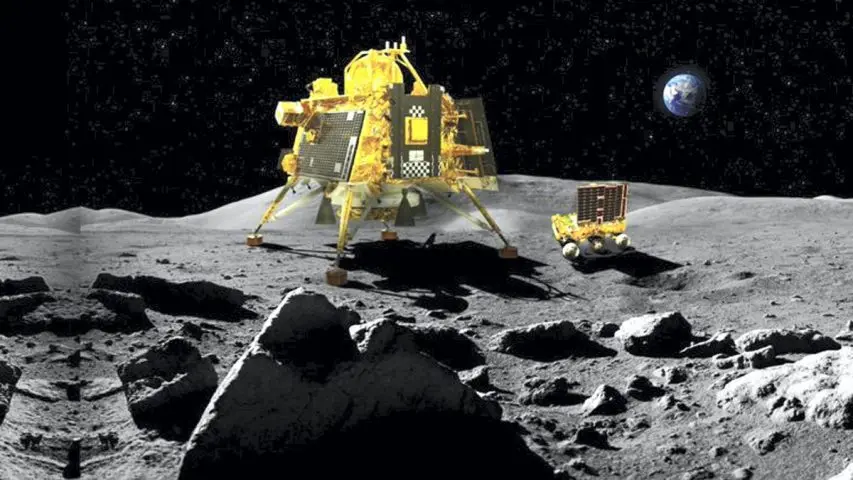
chandrayaan 3
India’s space agency, the Indian Space Research Organisation (ISRO), has been making remarkable strides in space exploration. Following the success of Chandrayaan-1 and Chandrayaan-2, ISRO is now gearing up for an even more ambitious lunar mission – Chandrayaan-3. This mission is set to demonstrate India’s capabilities in safe lunar landings and lunar surface roving. Chandrayaan-3, consisting of a Lander and Rover configuration, is poised to take India’s lunar exploration to new heights.
The Mission Overview
Chandrayaan-3 is designed to showcase India’s prowess in lunar exploration. It comprises a Lander module (LM), a Propulsion module (PM), and a Rover. The primary objective is to develop and demonstrate new technologies crucial for interplanetary missions. The Lander will soft-land on a designated lunar site and deploy the Rover, which will perform in-situ chemical analysis of the lunar surface during its mobility. Both the Lander and Rover carry scientific payloads to conduct experiments on the lunar surface.
Key Components of Chandrayaan-3
1. Propulsion Module (PM): The PM’s main function is to transport the LM from launch vehicle injection to the final lunar 100 km circular polar orbit and then separate from the LM. It is equipped with the Spectro-polarimetry of Habitable Planet Earth (SHAPE) payload to study Earth from lunar orbit.
2. Lander Payloads:
- Chandra’s Surface Thermophysical Experiment (ChaSTE): Designed to measure thermal conductivity and temperature on the lunar surface.
- Instrument for Lunar Seismic Activity (ILSA): To measure lunar seismic activity around the landing site.
- Langmuir Probe (LP): For estimating plasma density and its variations.
- Passive Laser Retroreflector Array: Accommodated for lunar laser ranging studies, a collaboration with NASA.
3. Rover Payloads:
- Alpha Particle X-ray Spectrometer (APXS): Used for deriving the elemental composition near the landing site.
- Laser-Induced Breakdown Spectroscope (LIBS): For qualitative and quantitative elemental analysis.
Mission Objectives
The key objectives of Chandrayaan-3 are:
- Safe and Soft Landing: Demonstrate India’s capability to safely land on the lunar surface.
- Rover Roving: Showcase the mobility of the Rover on the lunar surface.
- In-situ Scientific Experiments: Conduct experiments on the lunar surface to enhance our understanding of the Moon’s composition and geological features.
Advanced Technologies in Chandrayaan-3
Chandrayaan-3 incorporates several advanced technologies to achieve its mission objectives. Some of these include:
- Altimeters (Laser and RF-based)
- Velocimeters (Laser Doppler Velocimeter and Lander Horizontal Velocity Camera)
- Inertial Measurement (Laser Gyro-based)
- Advanced Propulsion System (Throttleable Liquid Engines)
- Navigation, Guidance, and Control Systems
- Hazard Detection and Avoidance Systems
- Landing Leg Mechanism
Specifications of Chandrayaan-3
- Mission Life: Approximately one lunar day (about 14 Earth days).
- Landing Site: Located at 69.367621°S, 32.348126°E with a size of 4 km x 2.4 km.
- Total Mass: 3900 kg, including the Propulsion Module, Lander Module, and Rover.
- Power Generation: Varies from 50W (Rover) to 758W (Propulsion Module).
- Communication: The Lander and Rover communicate with the Indian Deep Space Network (IDSN), and the Chandrayaan-2 Orbiter serves as a contingency link.
- Lander Touchdown Specifications: Vertical velocity ≤ 2 m/sec, Horizontal velocity ≤ 0.5 m/sec, Slope ≤ 12 degrees.
Scientific Payloads
Chandrayaan-3 carries a suite of scientific payloads to achieve its research objectives, including the measurement of plasma density, thermal properties of the lunar surface, seismic activity, and elemental composition of lunar soil and rocks.
Conclusion
Chandrayaan-3 represents a significant leap in India’s space exploration endeavors. With its advanced technology and ambitious objectives, this mission has the potential to expand our understanding of the Moon and pave the way for future interplanetary exploration. As we eagerly await the launch of Chandrayaan-3, it is a testament to ISRO’s commitment to pushing the boundaries of space exploration and India’s growing role in the global space community.






